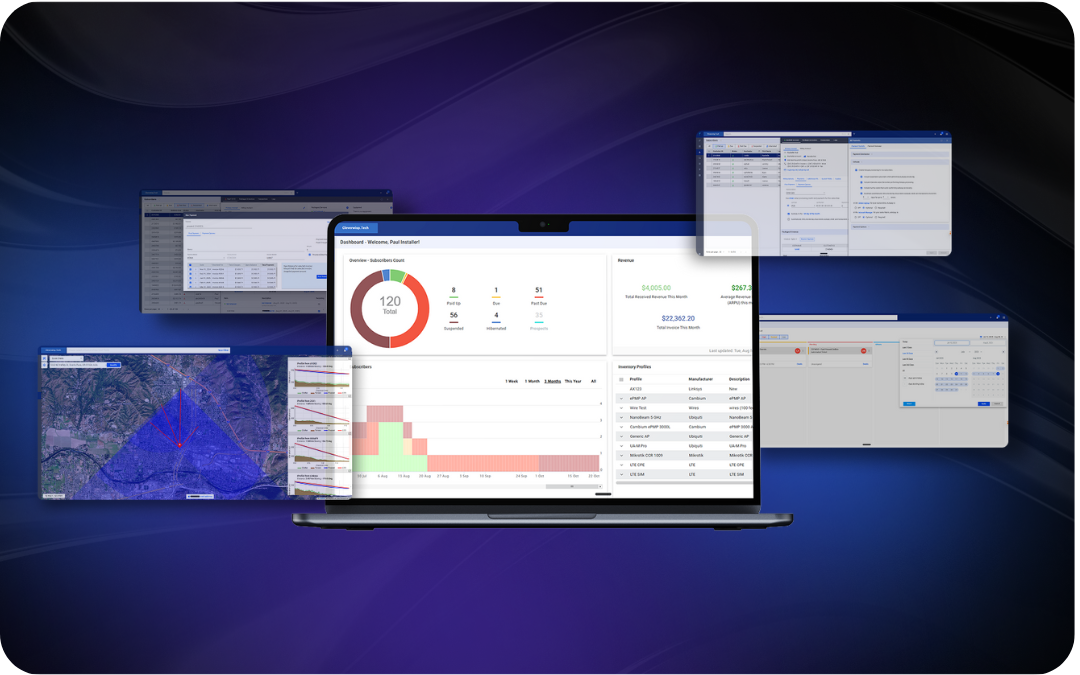The failure rate of small businesses is high – 20% of the businesses that were founded in 2014 didn’t make it to their second year; 30% didn’t make it to the third year[1]. The primary reasons they go out of business are 42% say that there wasn’t a need for the business and 29% say they run out of money[2].
To avoid becoming just another sad statistic, develop the skills necessary to make your WISP a revenue machine.
1. Understand failure management
No matter how smart or well-prepared, the best business minds take a wrong step from time-to-time. Colin Powell once said, “There are no secrets to success. It is the result of preparation, hard work and learning from failure.”
Expect failure – whether you’re the cause or not. A summer storm could take out a dozen radios. You or your staff are not at fault, but subscribers don’t care. If your WISP is going to offer quality internet service, there’s no choice but to spend the money and the time to replace damaged radios.
Remain calm and focused on the prize when you’re faced with failure and keep moving forward. Your staff, subscribers and WISP will follow.
2. Flexibility
Let’s say you’re investing in a new business model that costs big money — but, your projections show that this model will make you a lot of money within a year. Six months into a 12-month project timeline, there’s new data that indicates the new business model isn’t going to be as lucrative as you first thought. What do you do?
The one thing that you shouldn’t do is stubbornly push forward with the original plan. Instead, review the information, do more research and stay open to abandoning the project and losing the money you’ve already invested or adjusting your plans to balance the costs with the new projections.
History is littered with bad decisions that businesses made because they stayed the course. Did you know that an Eastman-Kodak engineer invented the first digital camera in 1975? The company decided not to invest in the digital camera until 1993, when other companies were already getting paid and Kodak was in danger of being out of date. Imagine the revenue they missed because they weren’t flexible.
3. Build relationships
As an independent business owner, you’re not afraid to own your decisions and rely on your own counsel. But, don’t be too independent, otherwise, you lose out on the business-building power of relationships.
Your subscribers are key relationships and should be nurtured and valued, otherwise they could go somewhere else. Respond to complaints and problems fast, and always treat your subscribers like you’re happy to hear from them.
To learn more about how to build your WISP with service and quality, review this early article; if you’re proud to own a WISP with great service and low prices, get more business-building tips here.
Other WISP owners are valuable allies who share information that can save or make you money. And, when you partner with vendors that have a reputation of exceeding expectations and are committed to your success, it’s like adding to your staff without having to pay more for payroll or health insurance.
When you want to partner with a billing system vendor that cares as much about your success as they do their own, then you’ll want to get to know Visp.net.
Want more knowledge about WISP profitability, be sure to check out WISP consultant, Joshaven Potter’s article, 5 Steps to WISP Profitability and look for part 2 of the article in September.
[1] Bureau of Labor Statistics; posted online: https://www.bls.gov/bdm/us_age_naics_00_table7.txt
[2] CB Insights; The Top 20 Reasons Small Businesses Fail; Feb.2018; posted online: https://www.cbinsights.com/research/startup-failure-reasons-top/










